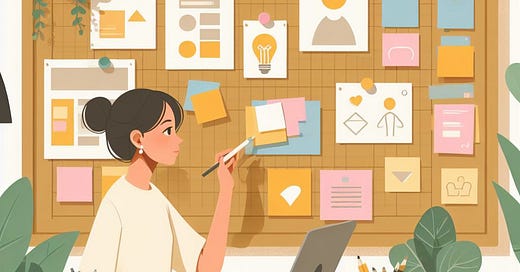The Designer’s Arsenal: Must Have Tools for Every Design Project
Unpacking My Trusted Design Toolkit
Product design demands not just creativity but also a strategic toolkit. Having access to a curated set of resources equips you to deliver high quality products. These tools not only fuel creativity but also act as navigational aids, helping designers tackle challenges and produce designs that stand out in a competitive market. Here are some of the resources and tools I depend on that form my design arsenal today.
1. Design Inspirations Sites
When I started designing back in university, my initial goal was to learn about spacing, layout, color theory, typography, and other UI elements. In order to do this, I would copy existing designs on sites like UI Jar, Behance, and Mobbin. These websites are a great resource to familiarize yourself with design patterns and concepts.
Here are other sites to learn from:
2. Design Principles, Methods, and UX Laws
Picture this: you want to conduct a usability test, but you find yourself wondering about the best practices and nuances of the process. This is where resources like UX Hints and NN/G articles come in. They offer foundational knowledge on design best practices and how to execute methods and activities.
Here are some of my favorite ones from NN/G:
3. UI Libraries
I also used to create side projects, like recreating existing apps. I would look for UI libraries like Tailwind, Material, Chakra in order to quickly create designs. These libraries are helpful if you don’t have time to create elements from scratch. These are already built with accessibility and usability in mind, so there won’t be much to change and using these will definitely speed up your workflow.
Also, if you need help with colors, these websites have proven to be helpful whenever I would design:
4. Figma Plugins
I use Figma for wireframing, creating mockups, and prototyping. I've been using several Figma plugins that play a pivotal role in enhancing the efficiency and depth of my work.
When translating wireframes and user flows into mockups, I would often use Brandfetch (to get high quality logos), Background Remover, Artboard Studio, and A11y Contrast Checker.
5. Figma Mobile App
Designing for mobile apps is tricky because you would have to maximize the entire screen without overloading the user. You would also have to determine whether the content is big enough for users to click (eg. buttons and clickable icons). In order to test your designs and see if it would be accessible, Figma has a mobile app that lets you view the screens you’ve designed from your phone. This way, you can check whether the text is readable, if the touch area is big enough, etc.
6. Books
I’m a self-taught designer. When I was starting out, I would spend a lot of time reading and applying what I’ve read. Design books are packed with so much insight. I would advise getting books that talk about a specific topic rather than the more general ones. Aside from design books, I also love reading about books that help me become a better communicator. Here are some of my recommendations for product designers:
Think Like a UX Researcher by David Travis and Philip Hodgson
The User Experience Team of One by Leah Buley
Articulating Design Decisions by Tom Greever
Never Split the Difference by Christopher Voss and Tahl Raz
Rework by Jason Fried and David Heinemeier Hansson
Range by David Epstein
Tip: I found it more valuable to read concepts/books that I can apply right away vs. reading something you don’t need for your current work. Try this method for better retention.
7. Courses
If you’re not a fan of reading books or you’re just a more visual learner, there are several good design courses online. Some even have worksheets and mini projects so you can apply what you’ve learned right away.
Pro Tip: Ask your company if they’re willing to sponsor some courses for you. Some companies include training budgets for employees.
Here are some courses I’ve taken that I recommend:
8. Graphics
When I was starting out, I didn’t come from a graphic design background so adding graphical elements to my designs was a challenge. Today, there are several sites/AI tools that can generate images you need like Midjourney, DALL-E, and Bing’s Image Creator.
For icon sets and illustrations, I would usually gravitate towards using Streamline Icons (Paid), Freepik, and Flaticon since they have massive repositories of graphical elements.
9. Notion
As a designer, I would find myself taking several notes from interviews, documenting design decisions (why did I design it this way), and tracking stakeholder feedback. I’ve been using Notion to keep everything organized so I can easily refer back to my work when needed.
Check out some of my Notion templates (FREE!) here: https://lauraang.gumroad.com/
10. Google Calendar
As a startup designer, I usually have to juggle multiple tasks at the same time (sometimes, multiple projects). Therefore, as an Individual Contributor, I have to protect my time for deep work and customer learning. I found time blocking extremely helpful in reserving time to work. I can either block off the same time every day or if I need bigger time chunks, I can block off an entire afternoon on specific days for deep work.
Conclusion
The resources and tools discussed here are integral to a designer's ability to navigate challenges and deliver high-quality work. As the design landscape evolves, these tools become indispensable, ensuring that your work stands out and creates a lasting impact for your users.
Happy designing!
—
Connect with me!
Email: laura.ang@expedock.com
LinkedIn: https://www.linkedin.com/in/laura-ang/
Website: https://lauraang.design/



